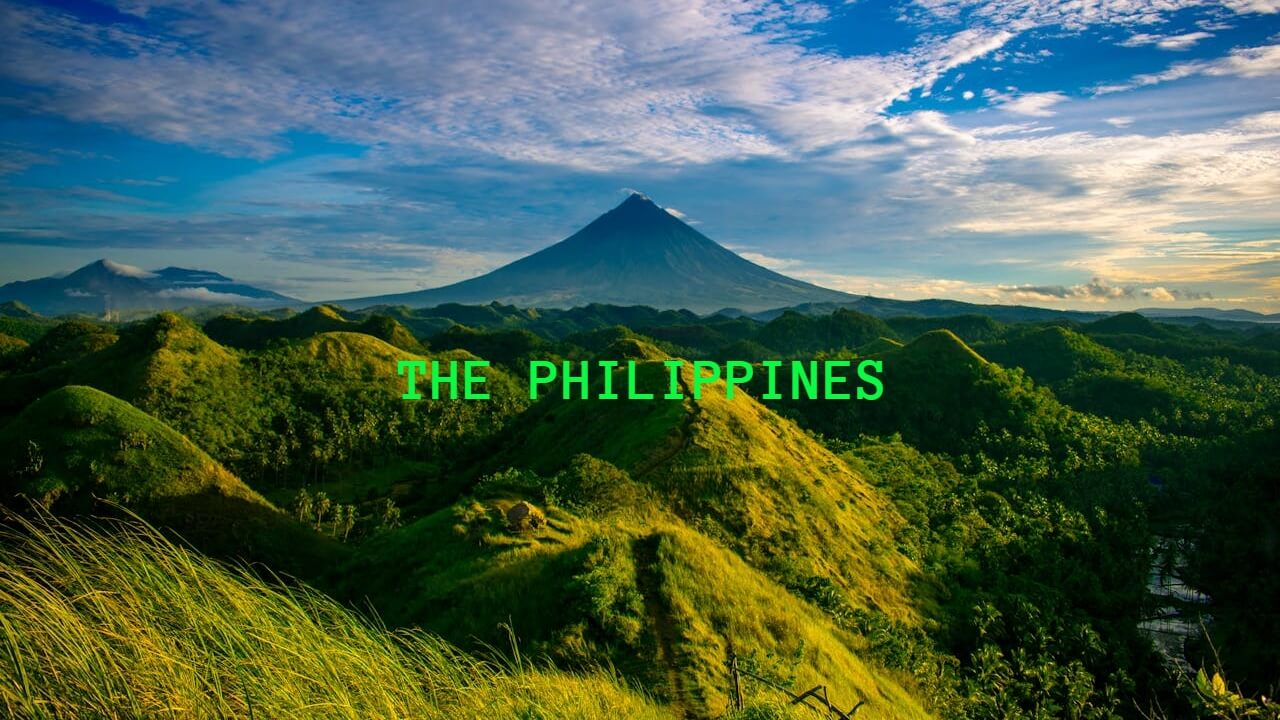The Philippines has undergone significant changes since its independence in 1946. Some of the key differences between the Philippines then and now include:
The Philippines
- Economy: The Philippine economy has grown significantly since independence. The country is now one of the fastest-growing economies in Southeast Asia. The economy is more diversified, with a growing middle class and increased investment in key industries like technology and tourism.
- Political System: The current political structure in the Philippines operates as a democratic republic. By maintaining transparent and impartial elections, fostering an active civil society, and safeguarding press freedom, the country upholds democratic values. Unfortunately, political instability, corruption, and authoritarian rule have also been challenges faced by the nation.
- Social Development in the Philippines: Despite advancements in social development, particularly in education and healthcare access, challenges of poverty and inequality remain prevalent in the country.
- Technology: The Philippines has become a hub for technology and innovation, with a growing tech sector. And increased access to digital technologies, such as the internet and mobile phones.
The Philippines has undergone significant transformations since gaining independence. Nevertheless, obstacles persist in economic growth, political stability, and social advancements.
The Philippines Etymology
The nation of the Philippines derived its name from King Philip II of Spain. The Philippines was under Spanish rule for 333 years, and the name “Filipinas” was bestowed upon it in tribute to the monarch. The name was later changed to “The Philippines” when the country gained independence from Spain in 1898.
History of The Philippines
a. Prehistory (pre–900)
The ancient history of the Philippines refers to the era preceding the recorded history of the nation. The oldest human remains found in the Philippines belong to the Tabon Man and are estimated to be from around 25,000 BCE. The early settlers of the Philippines were a blend of Austronesian and Negrito populations, who were mainly engaged in hunting, gathering, fishing, and agriculture. Through interactions with neighboring islands and Chinese traders. Their society and advancements in technology progressed gradually.
The Philippines has a rich prehistory. The earliest known human remains date back to the Pleistocene era (about 200,000 years ago). The earliest known human settlement in the Philippines is the Tabon Cave Complex in Palawan. Where the Tabon Man was discovered. The Philippines was also home to many ancient civilizations. Examples include the Ifugao people, known for constructing the Rice Terraces, and the ancient Kingdom of Tondo before colonization. During the colonial period, the Philippines was ruled by Spain (1521-1898) and the United States (1898-1946).
b. Early states (900–1565)
The Philippines had several early states and kingdoms before Spanish colonization in the 16th century. These included the Kingdom of Tondo, the Rajahnate of Cebu. The Sultanate of Sulu, the Confederation of Madja-as, and the Kedatuan of Madja-as are three distinct entities with historical significance. These states had their own unique cultures, political systems, and economies. And engaged in trade and warfare with each other and with neighboring countries. Although the early states were diverse, they established the groundwork for shaping a unique Filipino identity and culture.
The Philippines had several early states before Spanish colonization in the 16th century. These include:
- The Kingdom of Tondo, with its focal point in Manila. It was known for its trade and political ties with neighboring kingdoms and empires.
- The Kingdom of Maynila, situated near modern-day Manila, was a flourishing trading nation.
- Rajahnate of Cebu, a Hindu-Buddhist kingdom on the island of Cebu.
- The Sultanate of Sulu is a Muslim state located in the Sulu Archipelago.
These states had complex societies, trading networks, and cultural practices. And played an important role in shaping the Philippines’ pre-colonial history.
c. Spanish and American Colonial rule (1565–1946)
The Philippines was ruled by Spain for over 300 years (1565-1898), during which time. The culture, Roman Catholic religion, and political structure of Spain were imposed on the Philippines. Spanish rule was characterized by the forced conversion of indigenous peoples to Catholicism. The marginalization of indigenous languages and traditions, coupled with the exploitation of natural resources and the workforce.
The United States colonized the Philippines in 1898 after the Spanish-American War. American rule brought about political and economic changes, including the introduction of a new education system. And the establishment of a market economy. During World War II, the Philippines was occupied by Japan (1942-1945) before being liberated by Allied forces.
In 1946, the Philippines gained independence from the United States. American influence continues to be evident in the country, particularly in its culture and language.
d. Independence (1946–present)
The Philippines gained independence from the United States on July 4, 1946. After being occupied by Japan during World War II. Since independence, the Philippines has been a democratic republic with a presidential system of government.
Despite holding democratic elections, the nation has encountered hurdles, poverty, corruption, and political instability. The armed conflict, particularly in the southern region of Mindanao. Despite this, the Philippines has demonstrated notable advancements in multiple sectors, such as economic development and technological innovation. The country has emerged as a swiftly expanding economy with a substantial, youthful, and well-educated labor force, positioning it as a key player among the emerging tiger economies in Southeast Asia.
However, the country has also experienced political instability, martial law, and authoritarian rule.
Despite these challenges, the Philippines has made significant progress in the economy, politics, and society. The country has become one of the fastest-growing economies in Southeast Asia. The middle class is expanding, and there is a rise in political and civil rights. The Philippines is also a vibrant democracy, with a free press and an active civil society. And is a member of numerous international organizations. Such as the United Nations and the Association of Southeast Asian Nations (ASEAN).
Geography
a. Biodiversity
The Philippines is one of the most biologically diverse countries in the world, with a rich variety of flora and fauna. Many of which are found nowhere else on earth. The country is home to over 52,177 species of plants and animals, including over 500 species of birds. There are approximately 200 species of mammals and over 2,000 species of fish.
It is also a global hotspot for biodiversity, with numerous areas of high conservation value. Significant attractions in the Philippines include the Tubbataha Reef, Palawan Underground River, and Mount Apo Natural Park. Despite this, the country faces significant threats to its biodiversity, including habitat destruction, overfishing, and climate change.
Conservation efforts are underway to protect the country’s unique biodiversity, including the establishment of protected areas. Implements regulations to govern the trade of wildlife and wildlife products while promoting sustainable tourism.
b. Climate
It has a tropical climate, characterized by high temperatures and high humidity throughout the year. The country is located near the equator and is affected by monsoons. This brings heavy rainfall to some parts of the country during the wet season (July to October). And dry conditions for others during the dry season (November to June).
It is also prone to natural disasters, including typhoons, earthquakes, and volcanic eruptions. Given its placement in the Pacific Ring of Fire, the nation is susceptible to earthquakes and volcanic eruptions. Collaboratively, the government and global entities strive to reduce the effects of such catastrophes and plan for those yet to come.
READ:
FACILITY
NEARBY ATTRACTION





Shangri-La Mactan, Cebu
Punta Engaño Road, Lapu-Lapu City, Cebu, Mactan Island, Cebu, Philippines, 6015
NEARBY ATTRACTIONS





Edsa Shangri-La, Manila
1 Garden Way, Ortigas Center, Mandaluyong City, Mandaluyong, Manila, Philippines, 1650
NEARBY ATTRACTIONS





Makati Shangri-La, Manila
Ayala Avenue corner Makati Avenue, Makati, Manila, Philippines, 1200
FACILTY
DINING





Shangri-La The Fort, Manila
30th Street corner 5th Avenue, Bonifacio Global City, Bonifacio Global City (BGC) / Taguig, Manila, Philippines, 1634
NEARBY ATTRACTIONS





Shangri-La Boracay
Barangay Yapak, Barangay Yapak, Boracay Island, Philippines, 5608


Leave a Reply